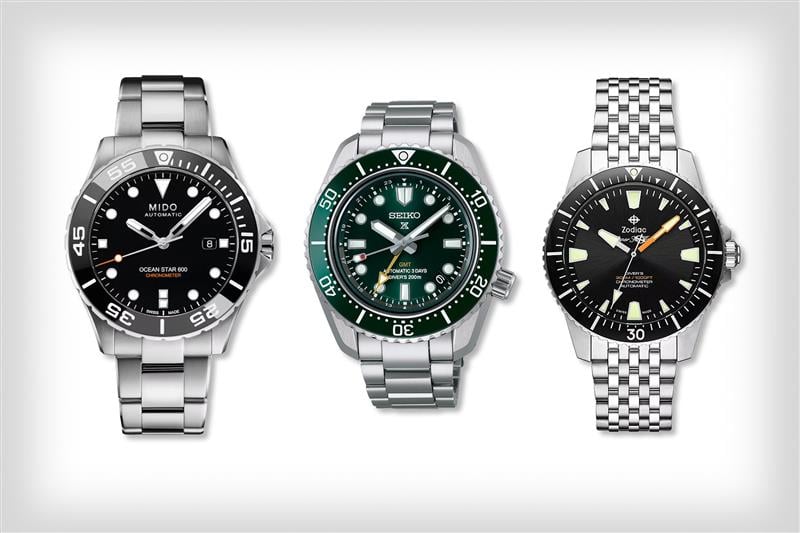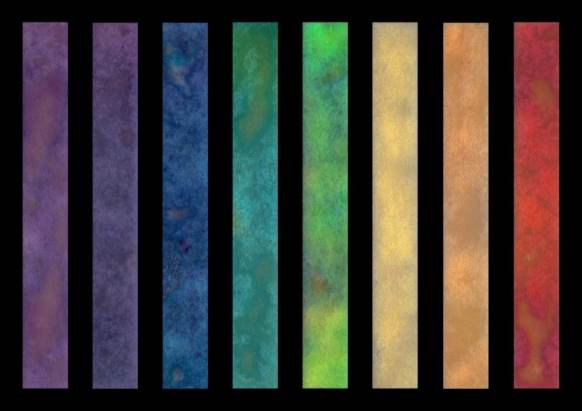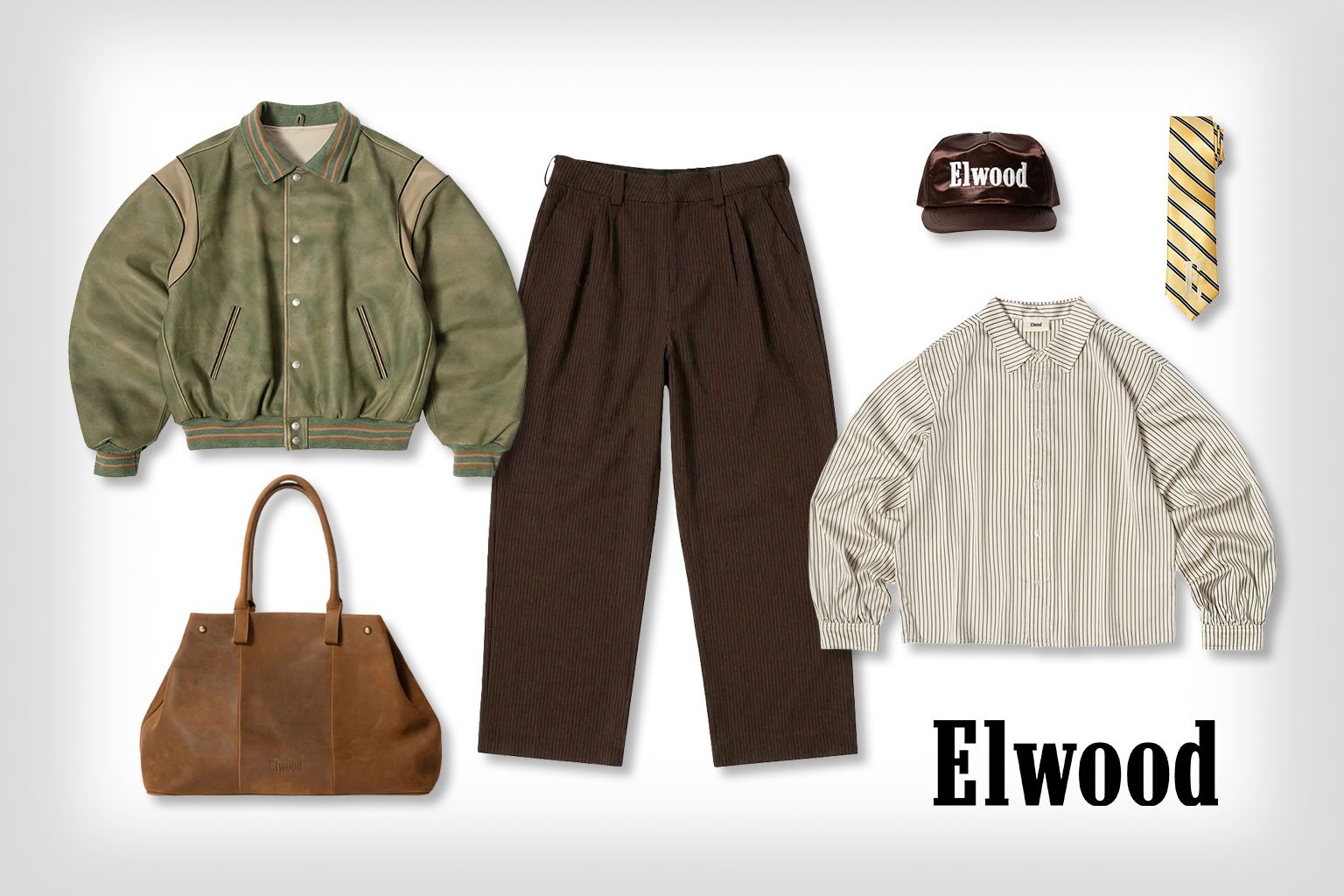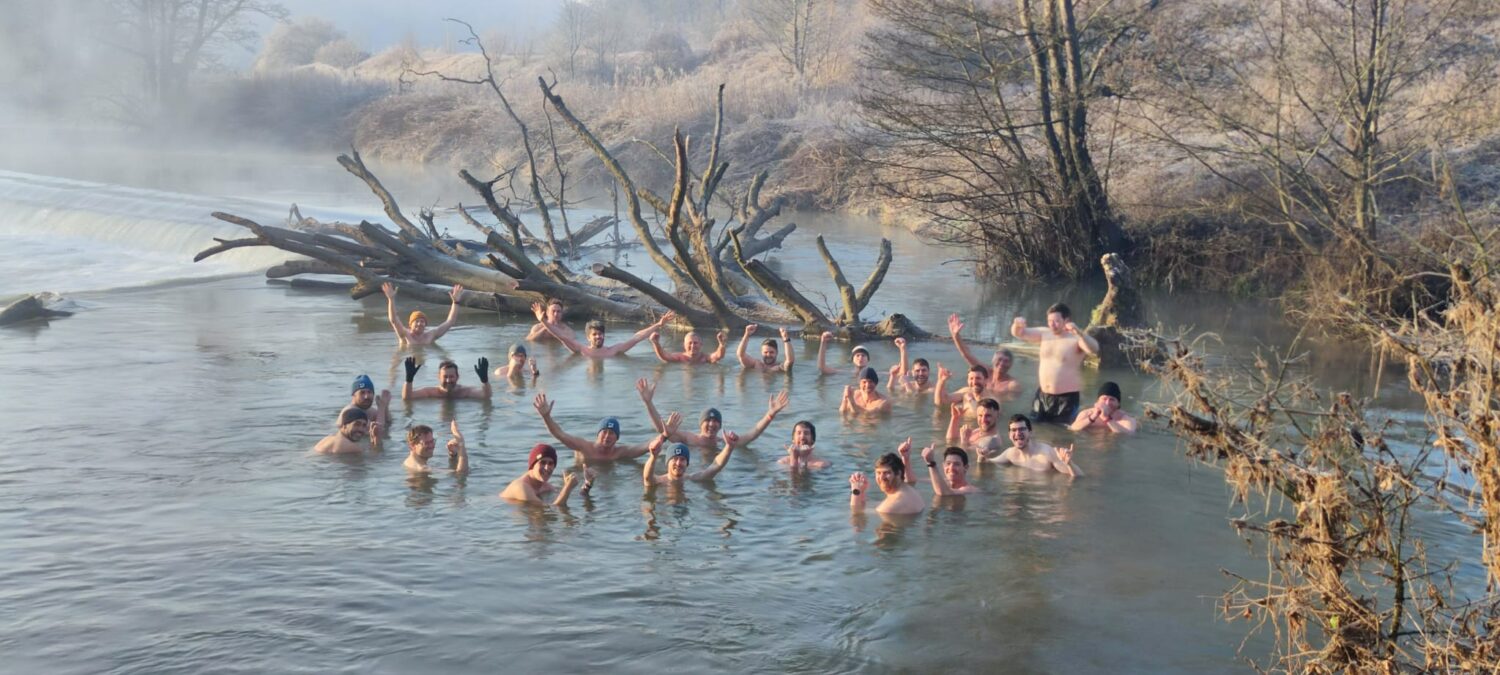EVERYDAY CARRY: Seamaster | FashionBeans
Dec 30, 2025The Smart Work Dress Code
- Oct 23, 2023
- 0 Comments
652
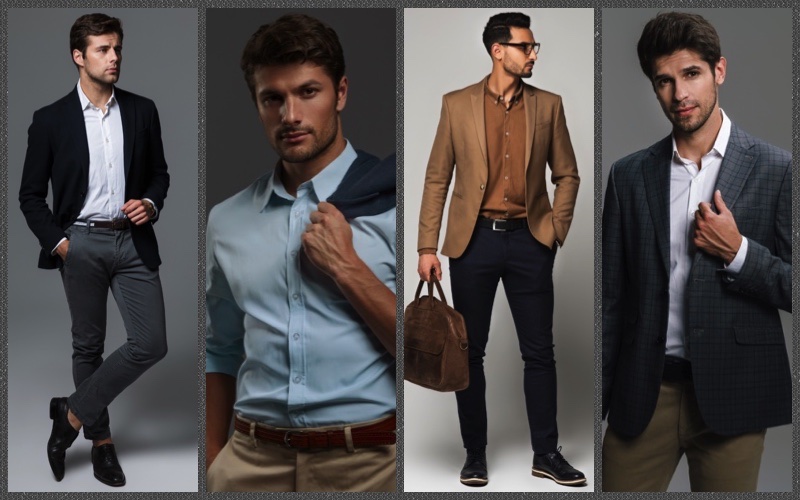
In today’s evolving work landscape, the notion of men’s business casual has significantly transformed. Gone are the days of emulating Don Draper’s buttoned-up look, complete with a tailored suit and tie. Now, men find themselves navigating a more flexible sartorial landscape.
Yet, this newfound freedom comes with its own set of challenges. The absence of strict rules leaves many questioning what constitutes appropriate attire for less formal business settings. Far from providing a license to don casual wear like t-shirts simply, this ambiguity calls for a nuanced understanding of modern workplace fashion.
Men’s Business Casual Attire
The business casual dress code for men typically includes tailored slacks, button-down shirts, knitted sweaters, and blazers. Sticking to high-quality pieces that fit well and look polished is essential, as these are the critical elements of a professional appearance in any environment.
To successfully navigate the ideal business wardrobe, it is essential to be mindful of your workplace’s specific guidelines and standards for dress. Research what is expected in your office or industry, and use this knowledge to guide your choices when getting dressed each morning.
Business Casual Wardrobe Essentials Guide
A well-curated wardrobe is the cornerstone for mastering modern office attire. Here are some indispensable pieces to consider when building your business wardrobe, each contributing to a look that balances formality with individual style.
Button-down Shirts
Button-down shirts are a classic choice for business looks, as they can be paired with slacks or chinos for a polished appearance. Color is essential when finding the perfect shirt for men.
Muted or neutral colors like navy, grey, beige, and black are timeless and appropriate for most professional situations. These shades are easy to wear with slacks or chinos and look polished.
Blazers & Sports Coats
Blazers are the ultimate pieces for a smart casual business look. Go for one in mid-gray and another in navy blue—both will be great staples in your wardrobe. Team the blazer with trousers or chinos, polo shirts or Oxford weave shirts, and leather loafers for an ultra-smart ensemble.
If you prefer a more relaxed take, layer a sports coat over a luxury T-shirt and pair it with jeans and sneakers. Don’t forget a coordinating belt and pocket square—this will add a finishing touch to your outfit.
Oxford Shirts
An Oxford shirt sets itself apart with its textured, basket-weave fabric and a button-down collar, which lend durability and a touch of refinement. This shirt is a versatile addition to any men’s business wardrobe and is available in a spectrum of colors, including classic white and light blue.
Pair it with trousers for a professional setting or jeans for a more relaxed look. To further elevate your style, focus on high-quality materials and tailored fits. Sneakers and a denim jacket can complete a casual ensemble.
Sweaters
Sweaters are a versatile layering element in business attire, adaptable across seasons. With options in various weights, they can be layered over a shirt or tucked under a blazer, offering both warmth and a polished aesthetic.
Consider a color palette that leans into subdued and practical shades like navy, grey, charcoal, and camel when curating a business casual wardrobe. These colors elevate your style and seamlessly fit into most work environments, making them ideal choices for practical work dressing.
Men’s Pants or Slacks
Slacks are a critical addition to any business wardrobe. Choose a pair of wool trousers, corduroy pants with a fine wale, or plain front dress slacks in neutral colors like grey, black, or navy for a more traditional option.
Opt for patterned or pinstriped pants in subtle shades and prints to bring more personality to your outfit. As with all business casual attire, the fit is critical: the waist should sit comfortably, and the fabric should lay flat down the leg without bunching or bagging.
Finish off the look with leather loafers and belts that match your shoes.
The T-Shirt
The T-shirt, often relegated to weekend wear or the gym, has found its way into the business casual wardrobe when styled thoughtfully. A well-fitted, solid-color T-shirt can serve as a versatile base layer.
Paired with a tailored blazer and chinos, it elevates the T-shirt to a level of casual sophistication suitable for the office. Brands like Sunspel and Everlane offer T-shirts designed with a more structured fit and high-quality fabric, making them ideal for this ensemble.
The key is to keep the T-shirt in pristine condition—no logos, no graphics, and absolutely no wear and tear. This ensures that even the most casual item in your wardrobe can be transformed into a professional piece.
Polo Shirts
Polo shirts are a great way to change your typical ensemble and add comfort to your business look. They are chic and can also be layered with other clothing, such as a suit jacket or knit sweater, for added warmth or sophistication.
For instance, pairing a polo shirt with a lightweight blazer will instantly elevate your look while maintaining professionalism. Similarly, layering a knitted sweater over the top of your polo will give you extra warmth on colder days while still looking polished and professional.
In terms of color, muted shades like navy blue, gray, beige, and black are always safe. You can quickly transition from day to night with just a few simple changes.
Casual Chinos
Regarding men’s business, chinos are practical because they can be dressed up or down depending on what look you’re going for. Stick to neutral colors like navy, olive, taupe, and khaki. These will pair well with most shirts and shoes.
Wear a slim-fit chino in a flat front or pleated finish for a more casual office outfit. To dress them up for important business meetings, pair your chinos with a dress shirt and sports coat.
Complete the ensemble with polished loafers or lace-up leather shoes, and you’ll be sure to make an impression.
Jeans
Jeans are versatile and great for the office and leisure. To ensure you look smart and stylish, opt for a dark wash with little to no fading or distressing that fits neatly around the waist and with a straight leg.
Avoid overly baggy or relaxed-fit jeans, as they can appear too casual for the office. To look more dressed, pair your jeans with a crisp button-up shirt and leather shoes to create an effortless yet polished look.
Business Casual Accessories
Often, accessories are vastly overlooked when building a business look. However, accessories provide an excellent opportunity to infuse your business outfit with personality. Select neutral shades such as black or grey for an understated aesthetic if you want to add a hat or scarf to your ensemble.
Leather Belts
Select a classic leather belt in shades like black, brown, or tan to achieve a polished look. The key is to match the belt color closely with the color of your shoes for a cohesive appearance. Additionally, consider coordinating the finish of your belt buckle with your jewelry for a harmonized look.
Jewelry at Work
Jewelry offers a subtle avenue to infuse personality into your business attire. For a polished look, consider classic watches, ranging from metal finishes like gold or silver to more relaxed leather straps.
Pair these with understated bracelets or rings to elevate your business attire subtly. The guiding principle for men’s jewelry remains: less is more.
Casual Pocket Squares
Pocket squares are a fashion accessory with a long and storied history. Initially worn by wealthy gentlemen of the Victorian era to signify their status, pocket squares are considered timeless classics.
They add a touch of color and texture to suits and jackets, adding character and personality that can otherwise be lacking in formal attire.
Business Casual Ties
Ties are another key accessory for men, especially for professional events. Opt for enduring colors like navy blue or grey, and make sure the tie is well-matched to the occasion and styled with precision.
Hats
The key for a business casual setting is to opt for understated yet stylish hats. Flat caps or newsboy caps can add a touch of elegance without being overly formal, making them more suitable for the office environment.
When choosing a hat, consider the material. Wool or tweed options offer a refined look that complements a business casual wardrobe.
Socks
Socks play a supporting role in men’s business attire. Stick to plain cotton socks in neutral colors like black, white, or grey for a classic, professional look.
Consider subtle patterns or colors like navy blue or dark brown for a hint of personality. Ensure they fit well and coordinate with your trousers and shoes to maintain a polished appearance.
What Types of Bags Are Ideal for the Office?
Selecting the ideal office bag involves a balance between functionality and style. First, ensure the bag can accommodate all your work essentials—documents, laptop or tablet, smartphone, and writing utensils.
The style also plays a significant role:
- Season and Occasion: A briefcase often suits professional meetings and business travel, while a classic backpack fits casual Fridays or daily use.
- Material: Leather generally conveys a more professional image compared to canvas.
- Color: Stick to neutral shades like black, brown, or gray for a universally appropriate look.
- Size: Opt for larger bags if you carry multiple items; smaller bags work well for a minimalist aesthetic.
By carefully considering these factors, you’ll effectively meet your practical needs and complement your professional wardrobe.
Business Attire Shoes
Navigating the landscape of business shoes for men can be complex, but the right pair elevates any professional look. Whether you’re a traditionalist or a trendsetter, there’s a style to match your needs.
Classic Choices
Loafers: Versatile and comfortable, loafers come in various styles, from tasseled to penny. Whether in suede or leather, they suit the office and after-hours.
Oxfords: A timeless staple, Oxfords offer a traditional shape with eye-catching details. Their flexible leather and cushioned insoles are available in sleek black or rich brown and are ideal for office days or formal events.
Casual Yet Professional
Sneakers: An underrated choice, white or colorful sneakers provide comfort without compromising style. Ideal for a laid-back office setting.
Boat Shoes: These nautical-inspired shoes are summer-friendly and pair well with shorts or chinos.
Modern Twists
Desert Boots: A smart alternative to formal shoes, desert boots balance style and convenience. They’re versatile enough for the office, dinners, or even weddings.
Monk Straps: These offer a contemporary flair for those looking to modernize their footwear.
Unique Options
Moccasin-Loafer Hybrids: Brands increasingly blend moccasins and loafers’ design details to create a unique and professional style. These hybrids offer the best of both worlds—casual comfort from the moccasin and the sleek sophistication of a loafer.
Espadrilles: Traditionally a casual choice, modern iterations of espadrilles are making their way into the business casual scene. With their rope-soled design, they offer a unique, relaxed vibe while still maintaining a sense of professionalism.
What Colors Are Best for a Business Wardrobe?
When selecting colors for your business wardrobe, muted tones like navy blue, grey, beige, and black are often the safest bets. They offer timeless versatility suitable for any office setting.
Lighter shades, such as white or cream, can be particularly effective during the warmer seasons of spring and summer. The tone of your office should also guide your color choices.
Brighter hues can add personality to your professional attire in more relaxed settings with lenient dress codes.
Does Business Affect Grooming Practices?
Facial Hair & Hairstyling
Grooming is crucial when dressing for a professional occasion, particularly in business casual settings with more relaxed yet meaningful guidelines. For men with beards, a well-groomed look suffices for a professional appearance.
Regarding hairstyles, classic cuts like a crew cut or a side part are generally safe bets. It may be worth asking for office-specific guidelines to ensure your hairstyle aligns with the workplace culture.
Clothing Fit & Maintenance
Fit and condition are critical in a business casual environment. Well-fitted garments, such as a tailored blazer or chinos, demonstrate your attention to detail. Clothing should also be well-maintained and free of stains and wrinkles to reflect a professional demeanor.
The Art of Wearing Cologne
When wearing cologne at work, less is more, and the type matters. An Eau de Toilette is often recommended over other types like Eau de Parfum or pure Parfum. The reason lies in the concentration of fragrance oils.
Eau de Toilette typically has a lower concentration, ranging from 5% to 15%, which results in a lighter, less overpowering scent. This makes it suitable for the workplace, where a subtler fragrance is generally more appropriate.
With their higher concentrations, Eau de Parfum and pure Parfum can be too intense and may not be well-received in a close office environment.
Office Culture & Business Style
Understanding your specific office culture is essential when curating a wardrobe. Office culture is pivotal in shaping the interpretation of men’s business attire.
While universal guidelines exist, the specifics can differ widely from one organization to another. For instance, some workplaces may adhere to traditional dress codes, restricting colors and patterns. Others might offer more leeway, permitting a broader range of colorful business attire.
It’s also crucial to factor in the nature of your work. Industries that involve frequent customer interactions often have stricter dress codes compared to roles that are more behind-the-scenes or colleague-focused.
The History of Business Casual Dress Codes
The evolution of business casual for men is a layered story shaped by different historical periods and societal needs. The concept initially gained traction during World War I, when a lack of dry cleaners led men to opt for more practical, easy-to-clean attire like sweaters and slacks.
The idea further developed during World War II. As many men enlisted, those who stayed in civilian roles faced a shortage of traditional business clothing. This led to a more relaxed dress code, laying the groundwork for what we now recognize as business casual.
Casual Friday & Other Dress Code Changes
The late 1970s and 1980s marked another critical moment, especially with companies like IBM formalizing Casual Fridays. This policy allowed men to wear sports coats and dress shirts instead of formal suits.
This shift changed workplace fashion and boosted menswear by broadening the market for more relaxed clothing options. The modern form of business casual emerged in Silicon Valley in the 1980s, featuring khaki pants, sensible shoes, and button-down collared shirts.
By the 1990s, this version had become mainstream, although it initially puzzled HR managers and employees. With time and guidance, the concept has become a widely accepted standard in professional attire.
Modern Casual Work Attire
Over the years, fashion trends have evolved to include more casual yet refined elements in business attire, like khakis and loafers. This simplified business style is a staple in modern wardrobes and is a go-to choice for occasions such as job interviews and Casual Fridays.
The contemporary business wardrobe for men offers greater flexibility than its early 20th-century counterpart. Driven by technological advancements and the shift toward digital communication, many workplaces have embraced a relaxed dress code.
The Future of Professional Style
Many experts forecast that the future dress code will be far more lenient than ever. As competition for jobs increases, employers must offer relaxed attire standards to secure talented individuals and maintain their interest in working with them.
Millennial men feel much less constrained by conventions than preceding generations did. So, what does the future of business dressing entail? One opinion is that it could reduce numerous workplace dress codes in formality until one particular style becomes a collaborative practice.
Business casual has become the new standard for corporate outfits. This transformation makes sense when you look back through time and analyze the history of office wear regulations.
Final Words: Mastering Business Casual for Men
Men’s business casual is a versatile style that marries classic pieces like shirts, trousers, and leather shoes with subtle accessories to achieve a balanced look that exudes formality and personal flair. The key is to select attire that is both professional and comfortable, tailored to your industry and personal style.
While guidelines may vary by workplace, it’s prudent to consult your employer’s dress code to ensure you’re meeting expectations. Ultimately, feeling confident and at ease in your outfit will empower you to perform at your best.
Common Questions About Business Casual
What is business casual for a man?
Business casual attire for men typically consists of dress slacks or chinos, a button-down shirt, and dress shoes. Other accessories, such as a belt, tie, and dress watch, can also be incorporated to complete the look. Choosing conservative colors and styles for your attire is essential, as bright or vivid clothing may be seen as unprofessional.
What should men not wear?
Men should avoid wearing several items, including shorts, flip flops or other casual footwear, and athletic clothing. Additionally, avoiding over-accessorizing or wearing flashy jewelry or accessories is best, as these may be considered too informal for a professional setting.
Can men wear casual pieces like jeans?
While jeans increasingly find their way into the business casual category, their appropriateness can vary by workplace. Darker washes or more subdued styles are generally more acceptable. However, it’s advisable to consult your employer’s dress code policy to ensure your choice aligns with workplace standards.
What is the dress code?
A business casual dress code typically refers to a formality slightly less formal than a traditional business ensemble but still more polished and professional than casual or athleisure wear.
This typically includes tailored slacks or chinos, button-down shirts, blazers or cardigans, and other similar clothing items in more muted colors and styles. Generally, it is best to avoid overly casual clothing items or accessories when dressing for a business occasion.
Publisher: Source link


